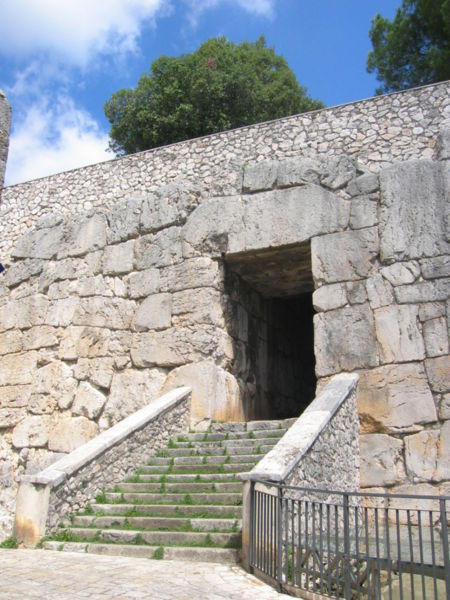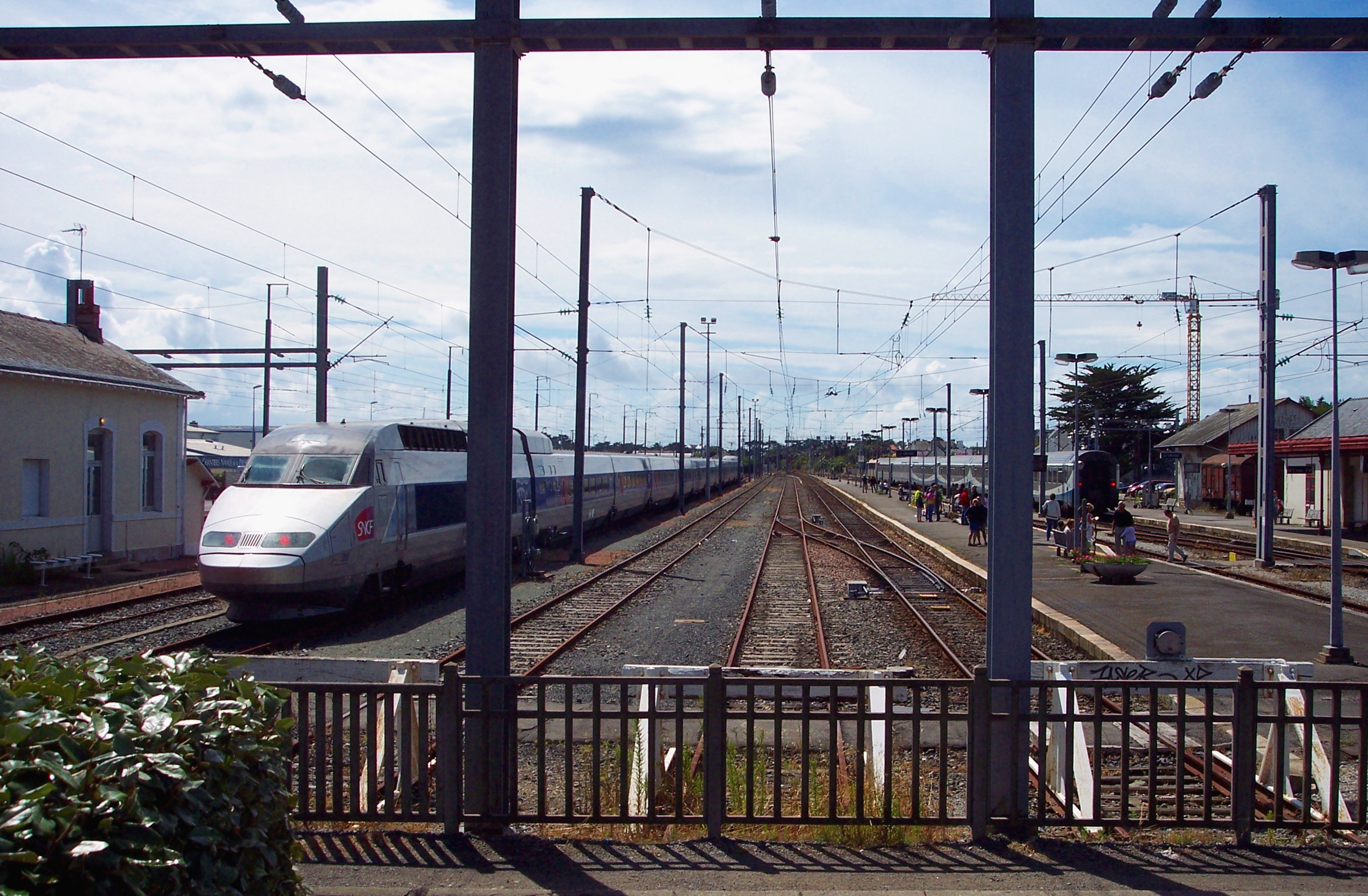|
Gétigné
Gétigné (; Gallo: ''Jestniyaé'', br, Yestinieg) is a commune in the department of Loire-Atlantique in the Pays de la Loire region in western France. It was part of the Brittany-Poitou Marches, and is located in the Nantes vineyard. It forms with three contiguous communes the urban unit of Clisson. Geography The neighboring municipalities of Gétigné are Clisson and Boussay in Loire-Atlantique, Sèvremoine in Maine-et-Loire, and Cugand in Vendée. Gétigné occupies an indentation of Loire-Atlantique between Vendée and Maine-et-Loire. History The parish of Gétigné was founded in the Middle Ages around the twelfth century. In 1409, Gétigné joined the Brittany-Poitou Marches. Its crossroads of Anjou, Brittany and Poitou contribute to the economic and military development of the parish. The two rivers Moine and Sèvre saw the development of activities related to the use of hydropower with the presence of many mills. Since the Middle Ages, Gétigné has a church Sainte R ... [...More Info...] [...Related Items...] OR: [Wikipedia] [Google] [Baidu] |
Cugand
Cugand () is a commune in the Vendée department in the Pays de la Loire region in western France. It is part of the urban unit of Clisson. INSEE Geography Cugand is located along the . Its neighboring are: * In ** La Bernardière **[...More Info...] [...Related Items...] OR: [Wikipedia] [Google] [Baidu] |
Clisson Sèvre Et Maine Agglo
Clisson Sèvre et Maine Agglo is the '' communauté d'agglomération'', an intercommunal structure, centred on the town of Clisson. It is located in the Loire-Atlantique department, in the Pays de la Loire region, western France. Created in 2017, its seat is in Clisson.CA Clisson Sèvre et Maine Agglo (N° SIREN : 200067635) BANATIC. Retrieved 18 November 2022. Its area is 309.6 km2. Its population was 56,135 in 2019, of which 7,435 in Clisson proper.Comparateur de territoire [...More Info...] [...Related Items...] OR: [Wikipedia] [Google] [Baidu] |
Alatri
Alatri ( la, Aletrium) is an Italian town and ''comune'' of the province of Frosinone in the region of Lazio, with c. 30,000 inhabitants. An ancient city of the Hernici,Chisholm, Hugh, ed. (1911). "Hernici". Encyclopædia Britannica (11th ed.). it is known for its megalithic acropolis. History The area of the modern city was settled as early as the 2nd millennium BC. ''Aletrium'' was a town of the Hernici which, together with Veroli, Anagni and Ferentino, formed a defensive league against the Volsci and the Samnites around 550 BC. In 530 they allied with Tarquinius Superbus' Rome, confirming the Etruscan influence in the area attested also by archaeology. Alatri was defeated by Rome in 306 BC and forced to accept the citizenship. In Cicero's time it was a ''municipium,''Pais, Ettore, ''Storia della colonizzazione di Roma antica'', Roma, 1923 and continued in this position throughout the imperial period. After the fall of the Western Roman Empire, the city decayed, the on ... [...More Info...] [...Related Items...] OR: [Wikipedia] [Google] [Baidu] |
Communes Of The Loire-Atlantique Department
The following is a list of the 207 communes of the Loire-Atlantique department of France. The communes cooperate in the following intercommunalities (as of 2020):BANATIC Périmètre des EPCI à fiscalité propre. Accessed 3 July 2020. * *Communauté d'agglomération *Communauté d'agglomération * |
Gallo Language
Gallo is a regional language of eastern Brittany. It is one of the langues d'oïl, a Romance sub-family that includes French. Today it is spoken only by a minority of the population, as the standard form of French now predominates in this area. Gallo was originally spoken in the Marches of Neustria, an area now corresponding to the border lands between Brittany, Normandy, and Maine. Gallo was a shared spoken language among many of those who took part in the Norman conquest of England, most of whom originated in Upper (i.e. eastern) Brittany and Lower (i.e. western) Normandy, and thus had its part, together with the much bigger role played by the Norman language, in the development of the Anglo-Norman variety of French which would have such a strong influence on English. Gallo continued as the everyday language of Upper Brittany, Maine, and some neighbouring portions of Normandy until the introduction of universal education across France, but is spoken today by only a small ... [...More Info...] [...Related Items...] OR: [Wikipedia] [Google] [Baidu] |
Loire-Atlantique
Loire-Atlantique (; br, Liger-Atlantel; before 1957: ''Loire-Inférieure'', br, Liger-Izelañ, link=no) is a department in Pays de la Loire on the west coast of France, named after the river Loire and the Atlantic Ocean. It had a population of 1,429,272 in 2019.Populations légales 2019: 44 Loire-Atlantique INSEE History Loire-Atlantique is one of the original 83 departments created during the on March 4, 1790. Originally, it was named Loire-Inférieure, but its name was changed in March 9, 1957 to Loire-Atlantique. The area is part of the historical |
Pays De La Loire
Pays de la Loire (; ; br, Broioù al Liger) is one of the 18 regions of France, in the west of the mainland. It was created in the 1950s to serve as a zone of influence for its capital, Nantes, one of a handful of "balancing metropolises" (). Geography Pays de la Loire is in western France, bordered by Brittany on the northwest, Normandy on the north, Centre-Val de Loire on the east, Nouvelle-Aquitaine on the south, and the Bay of Biscay of the North Atlantic Ocean on the southwest. Departments and former province Pays de la Loire comprises five departments: Loire-Atlantique, Maine-et-Loire, Mayenne, Sarthe, Vendée. Pays de la Loire is made up of the following historical provinces: * Part of Brittany, with its old capital Nantes contained within the Loire-Atlantique department. This is up to 20% of historical Brittany. The other 80% makes up the currently neighbouring region of Brittany * Anjou: is largely absorbed into the Maine-et-Loire department; the rest in th ... [...More Info...] [...Related Items...] OR: [Wikipedia] [Google] [Baidu] |
France
France (), officially the French Republic ( ), is a country primarily located in Western Europe. It also comprises of overseas regions and territories in the Americas and the Atlantic, Pacific and Indian Oceans. Its metropolitan area extends from the Rhine to the Atlantic Ocean and from the Mediterranean Sea to the English Channel and the North Sea; overseas territories include French Guiana in South America, Saint Pierre and Miquelon in the North Atlantic, the French West Indies, and many islands in Oceania and the Indian Ocean. Due to its several coastal territories, France has the largest exclusive economic zone in the world. France borders Belgium, Luxembourg, Germany, Switzerland, Monaco, Italy, Andorra, and Spain in continental Europe, as well as the Netherlands, Suriname, and Brazil in the Americas via its overseas territories in French Guiana and Saint Martin. Its eighteen integral regions (five of which are overseas) span a combined area of and contain clos ... [...More Info...] [...Related Items...] OR: [Wikipedia] [Google] [Baidu] |
Nantes
Nantes (, , ; Gallo: or ; ) is a city in Loire-Atlantique on the Loire, from the Atlantic coast. The city is the sixth largest in France, with a population of 314,138 in Nantes proper and a metropolitan area of nearly 1 million inhabitants (2018). With Saint-Nazaire, a seaport on the Loire estuary, Nantes forms one of the main north-western French metropolitan agglomerations. It is the administrative seat of the Loire-Atlantique department and the Pays de la Loire region, one of 18 regions of France. Nantes belongs historically and culturally to Brittany, a former duchy and province, and its omission from the modern administrative region of Brittany is controversial. Nantes was identified during classical antiquity as a port on the Loire. It was the seat of a bishopric at the end of the Roman era before it was conquered by the Bretons in 851. Although Nantes was the primary residence of the 15th-century dukes of Brittany, Rennes became the provincial capital after ... [...More Info...] [...Related Items...] OR: [Wikipedia] [Google] [Baidu] |
Clisson
Clisson (; br, Klison), is a commune in the Loire-Atlantique department in the Pays de la Loire region in western France. It is situated at the confluence of the Sèvre Nantaise and the Moine southeast of Nantes. The town and the celebrated family of Clisson (the most famous members are Olivier IV de Clisson and Jeanne de Clisson) take their name from their stronghold. Clisson has its imposing ruins, parts of which date from the thirteenth century. The town and castle, the château de Clisson, were destroyed in 1792 and 1793 during the War in the Vendée. Afterwards, the sculptor François-Frédéric Lemot bought the castle, and the town was rebuilt in the early part of the 19th century according to his plans. There are picturesque parks on the banks of the rivers. The Moine is crossed by an old gothic bridge and by a fine modern viaduct. Population Culture The Hellfest music festival has taken place outside the town since 2006. International relations Clisson i ... [...More Info...] [...Related Items...] OR: [Wikipedia] [Google] [Baidu] |
Boussay, Loire-Atlantique
Boussay (; Gallo: ''Bóczaè'', br, Beuzid-Klison) is a commune in the Loire-Atlantique department in western France. Population See also *Communes of the Loire-Atlantique department The following is a list of the 207 communes of the Loire-Atlantique department of France. The communes cooperate in the following intercommunalities (as of 2020):Official site Communes of Loire-Atlantique {{LoireAtlantique-geo-stub ... [...More Info...] [...Related Items...] OR: [Wikipedia] [Google] [Baidu] |
Sèvremoine
Sèvremoine () is a commune in the Maine-et-Loire department of western France. Saint-Macaire-en-Mauges is the municipal seat. It takes its name from the river Sèvre Nantaise and Moine. History It was established on 15 December 2015 and consists of the former communes of Le Longeron, Montfaucon-Montigné, La Renaudière, Roussay, Saint-André-de-la-Marche, Saint-Crespin-sur-Moine, Saint-Germain-sur-Moine, Saint-Macaire-en-Mauges, Tillières and Torfou. 5 October 2015 Population See also *Communes of the Maine-et-Loire department
...
[...More Info...] [...Related Items...] OR: [Wikipedia] [Google] [Baidu] |



